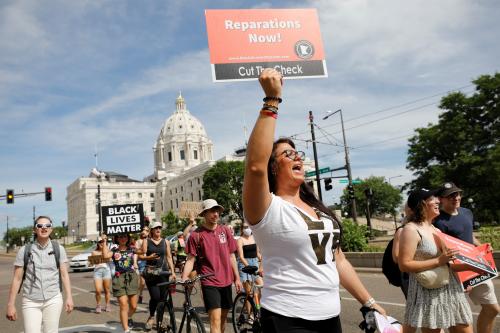10 Things We Get Wrong About Reparations
The federal government alone is capable of paying the bill. And, as the entity that created and maintains the black-white wealth gap, it should pay the debt
Federal policies produced and sustain the racial wealth gap. Starting with the legalization of slavery, itself, tantamount to a
de facto “affirmative action” program for white Americans with massive potential for profiteering, and continuing with the Homestead Act of 1862, which enabled whites to build wealth through the acquisition of 160-acre land grants in the western territories — land that had been occupied by indigenous people, completing the nation’s colonial settler project. At almost the same time, recently emancipated blacks were promised and then denied 40-acre land grants, starting with the 30-mile-wide band stretching from the Sea Islands of South Carolina, through Georgia, to the St. Johns River in Florida, property that could have been made available for exclusive use of black families for homesteads. That land was returned to the Confederates. In the 20th century, the federal government advantaged whites with the G.I. Bill — subsidies for home mortgages and business enterprises while actively disadvantaging blacks. Political scientist Ira Katznelson observed, “Of the 3,229 GI Bill guaranteed loans for homes, businesses and farms made in 1947 Mississippi, for example, only two were offered to black veterans.” And in a partnership with municipalities and banking institutions, the federal government introduced redlining and restrictive covenants, and authorized funds for interstate highways that decimated black residential and business districts while connecting white suburbs to new parks and commercial centers.
Many Americans are under the mistaken impression that racial equity initiatives and reparations are equivalent. Plans like the housing voucher program Evanston, Illinois, recently approved with a total budget of $10 million to provide $25,000 grants to black residents for home maintenance expenses or for the down payment on a house in the city, and Asheville, North Carolina’s program aimed at increasing “minority” participation in the business of the city, are mislabeled “reparations” and will not have much effect on the enormous racial wealth gap.
Nor are affirmative action programs reparations. They were designed to address discrimination in the workplace, not to increase individual wealth. Any governmental act that reverses harmful policies without also providing adequate compensation for their effects is not reparations. Reparations — recompense for the cumulative effects of white supremacy — are direct payments from the federal government to American descendants of U. S. slavery calibrated to eliminate the gulf in black-white wealth, now estimated at $11 trillion. This is not necessarily a cash payment. It could be a trust account, an annuity, endowment or some other form of investment — all designed to improve black well-being.
The federal government is capable of paying the bill. And, as the entity that created the black-white wealth gap, it should pay the debt.

www.rollingstone.com


